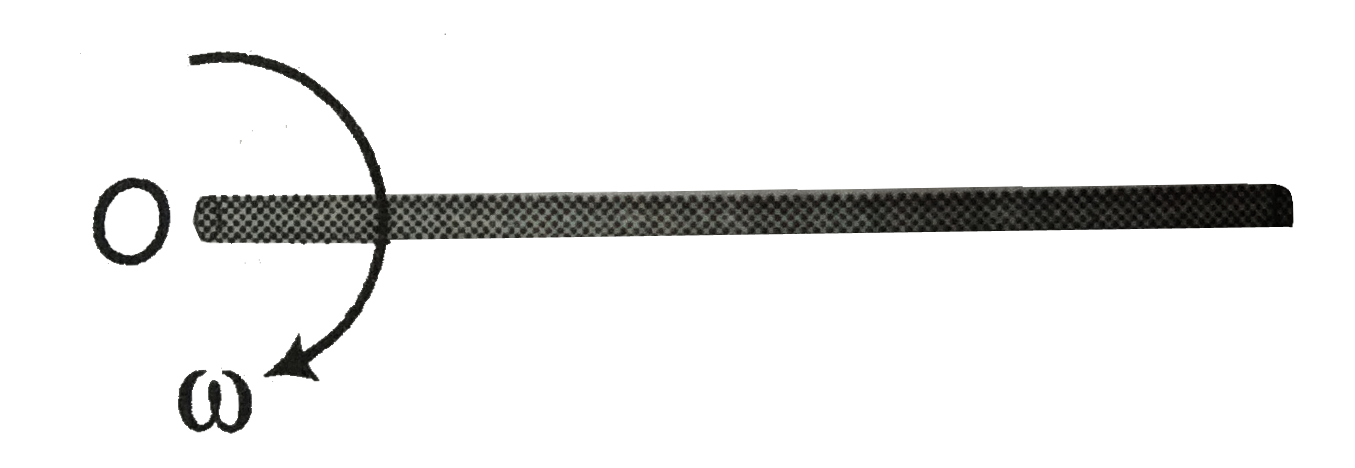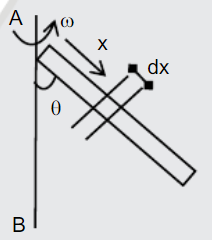A ball is whirled in a circle by attaching it to a fixed point with a string. Is there an angular rotation of the ball about its centre? If yes, is this angular velocity equal to the angular velocity of the ball about the fixed point?
To solve the problem, we need to analyze the motion of the ball being whirled in a circle and determine the relationship between its angular rotation about its center and its angular velocity about the fixed point.
1. Understanding the Setup:
- A ball is attached to a string and is being whirled around a fixed point. The fixed point is the point where the string is attached.
2. Angular Rotation of the Ball:
- When the ball is whirled in a circle, it does indeed have an angular rotation about its own center. This is because the ball is not just moving in a circular path; it is also rotating about its own axis.
3. Defining Angular Velocity:
- Angular velocity is defined as the rate of change of angular displacement. For the ball about the fixed point, we can denote this angular velocity as ωf.
4. Calculating Angular Velocity about the Fixed Point:
- The angular velocity of the ball about the fixed point can be calculated using the formula:
ωf=2πT
where T is the time period for one complete revolution around the fixed point.
5. Completing One Revolution:
- After one complete revolution, the ball returns to its original position. During this time, it has undergone an angular displacement of 2π radians.
6. Angular Velocity about the Center:
- The angular velocity of the ball about its own center, denoted as ωc, can also be calculated using the same formula:
ωc=2πT
This is because the ball has completed one full rotation about its center in the same time period T.
7. Conclusion:
- Therefore, we find that the angular velocity of the ball about its center ωc is equal to the angular velocity of the ball about the fixed point ωf:
ωc=ωf
Final Answer:
Yes, there is an angular rotation of the ball about its center, and the angular velocity of the ball about its center is equal to the angular velocity of the ball about the fixed point.
---
- A ball is attached to a string and is being whirled around a fixed point. The fixed point is the point where the string is attached.
- When the ball is whirled in a circle, it does indeed have an angular rotation about its own center. This is because the ball is not just moving in a circular path; it is also rotating about its own axis.
- Angular velocity is defined as the rate of change of angular displacement. For the ball about the fixed point, we can denote this angular velocity as ωf.
- The angular velocity of the ball about the fixed point can be calculated using the formula:
ωf=2πT
where T is the time period for one complete revolution around the fixed point.
- After one complete revolution, the ball returns to its original position. During this time, it has undergone an angular displacement of 2π radians.
- The angular velocity of the ball about its own center, denoted as ωc, can also be calculated using the same formula:
ωc=2πT
This is because the ball has completed one full rotation about its center in the same time period T.
- Therefore, we find that the angular velocity of the ball about its center ωc is equal to the angular velocity of the ball about the fixed point ωf:
ωc=ωf
Yes, there is an angular rotation of the ball about its center, and the angular velocity of the ball about its center is equal to the angular velocity of the ball about the fixed point.
Topper's Solved these Questions
- ROTATIONAL MECHANICSBOOK - HC VERMA ENGLISHCHAPTER - ROTATIONAL MECHANICSEXERCISE - Exercises
86 Videos
- REST AND MOTION : KINEMATICSBOOK - HC VERMA ENGLISHCHAPTER - REST AND MOTION : KINEMATICSEXERCISE - Question for short Answer
13 Videos
- SIMPLE HARMONIC MOTIONBOOK - HC VERMA ENGLISHCHAPTER - SIMPLE HARMONIC MOTIONEXERCISE - Question for short Answer
15 Videos
Similar Questions
Knowledge Check
A mass is supported on a frictionless horizontal surface. It is attached to a string and rotates about a fixed centre with a angular velocity ω0. If the length of the string and angular velocity are doubled, the tension in the string which was initially T0 is now
AT0BT0/2C4T0D8T0
A fly wheel is rotating about its own axis at an angular velocity 11rads−1, its angular velocity in revolution per minute is
View SolutionThe angular velocity of a rigid body about any point of that body is same :
View Solution
A rod of mass 2 kg ad length 2 m is rotating about its one end O with an angular velocity ω=4rad/s. Find angular momentum of the rod about the axis rotation.
View SolutionA particle attached to a string is rotating with a constant angular velocity and its angular momentum is L. If the string is halved and angular velocity is kept constant, the angular momentum will be
View SolutionA rod is rotating with angular velocity ω about axis AB. Find cosθ.

View SolutionA particle moves in a circle with constant angular velocity ω about a point P on its circumference. The angular velocity of the particle about the centre C of the circle is
View SolutionA particle, held by a string whose other end is attached to a fixed point C, moves in a circle on a horizontal frictionless surface. If the string is cut, the angular momentum of the particle about the point C
View Solution